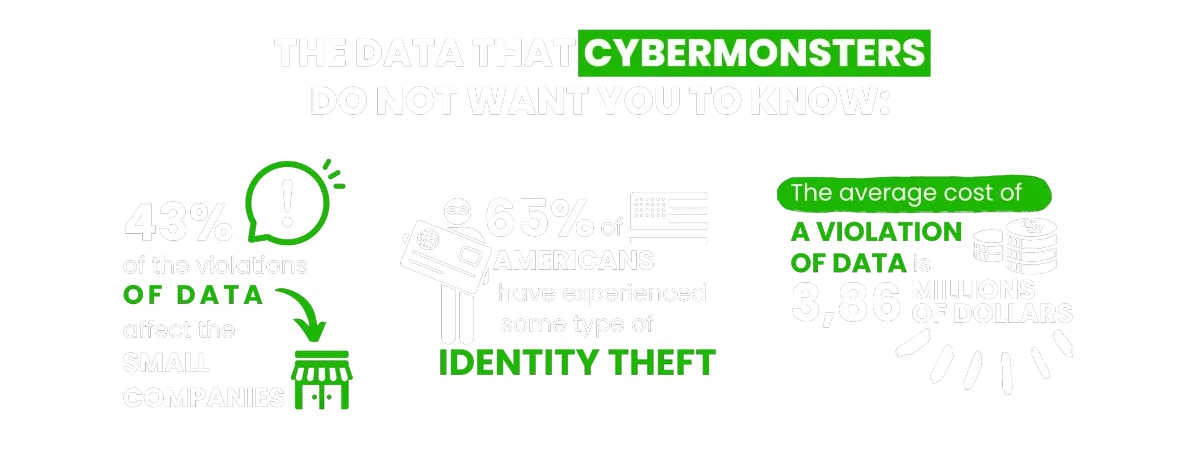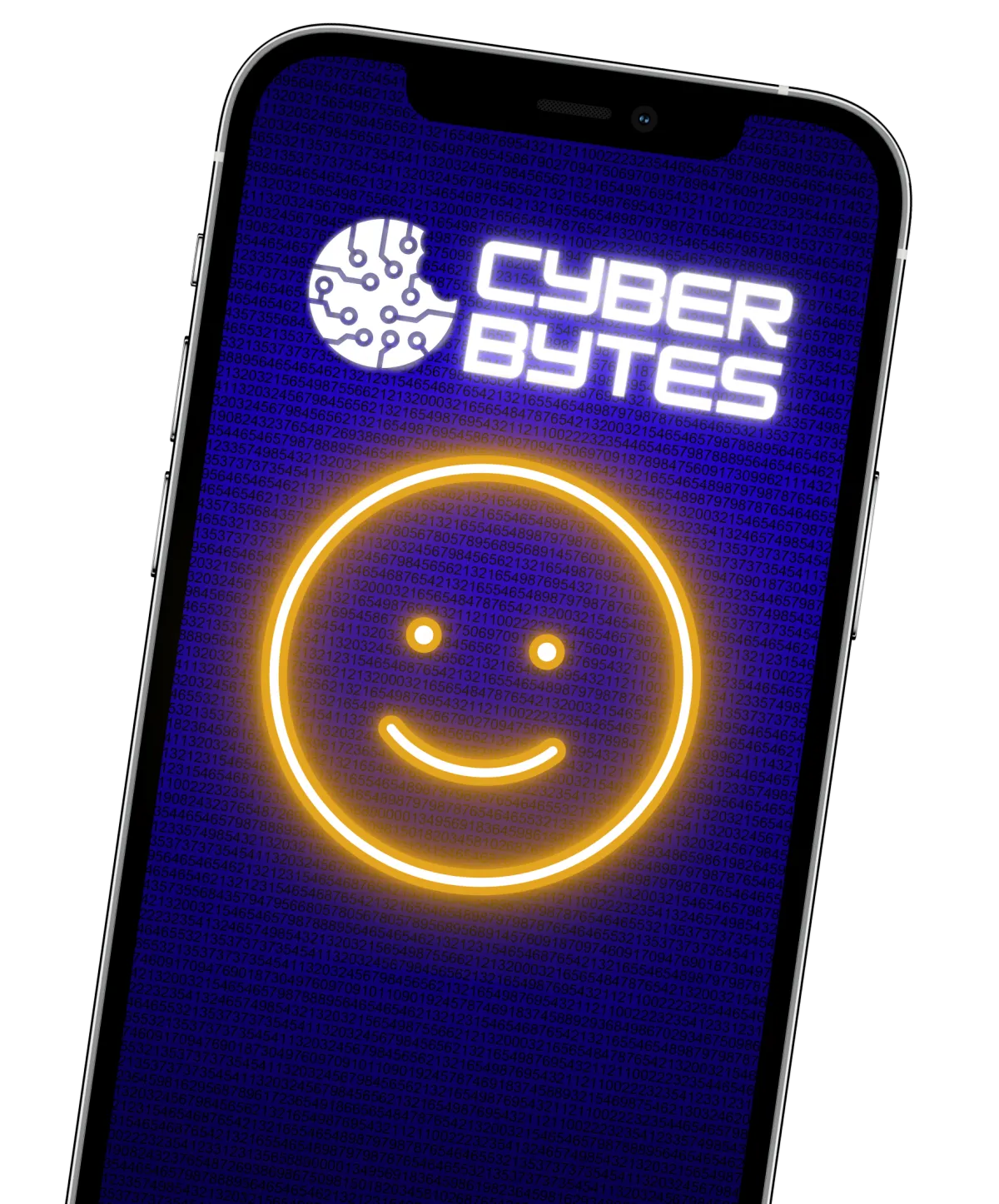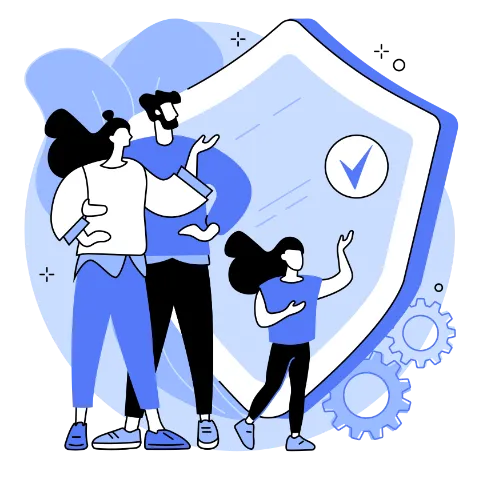Teaching AI Safety: Empowering Youth to Navigate the AI-Driven World
As someone who has experienced the challenges of navigating the digital world firsthand, I know how important it is to educate young people about AI safety. With the rapid advancements in artificial intelligence (AI), it's crucial that we empower youth to understand and interact with AI responsibly from an early age.
When I think back to my own journey of learning about cybersecurity, I realize how much easier it would have been if I had received guidance on technology safety early on. That's why I'm passionate about helping young people develop the skills and knowledge they need to thrive in an technology AI-driven world.
The "Be I AM" Principle for AI Safety Education
At Way2Protect®, we believe that the key to empowering youth to navigate the AI-driven world safely is to follow the "Be I AM" principle: Be Intentional, Be Aware, and Be Mindful.
Be Intentional: Being intentional about AI safety education means setting clear goals and choosing age-appropriate resources and activities. It's essential to create safe spaces for open discussions about AI, where young people feel comfortable asking questions and expressing their concerns.
Educators and parents can start by having open conversations with youth about their experiences and expectations around AI. Encourage them to share their thoughts and listen to their perspectives. Together, create AI safety guidelines that everyone can agree on.
Be Aware: To effectively teach AI safety, it's crucial to understand the potential risks and benefits of AI for young people. This includes recognizing the signs of AI-powered scams or cyberbullying, and staying informed about the latest developments in AI and their implications for youth.
Make it a habit to regularly discuss AI-related news and incidents with young people. Encourage them to think critically about the information they encounter online and to question the motives behind AI-powered content or interactions.
Be Mindful: Being mindful in the context of AI safety means encouraging responsible decision-making and a balanced approach to AI use. It's about fostering a mindset of lifelong learning and adaptability in the face of technological change.
Teach young people to pause and think before engaging with AI-powered tools or content. Encourage them to consider the potential consequences of their actions and to prioritize their safety and well-being above all else.
Fun Activities to Teach AI Safety to Youth
Teaching AI safety doesn't have to be boring or preachy. Here are some fun activities that educators and parents can do with young people to help them learn about AI in an engaging way:
AI-themed role-playing games: Create scenarios where participants take on different roles, such as an AI-powered virtual assistant and a young person interacting with it. Discuss how the youth can stay safe and make responsible choices.
Group discussions about AI in the news: Choose an AI-related news article or video to explore together. Encourage everyone to share their thoughts and opinions, and discuss the potential implications for young people.
Creating AI safety posters or comics: Have young people create posters or comics that illustrate important AI safety tips or scenarios. Display them prominently in classrooms or community spaces as reminders.
Interactive online quizzes and challenges: Many websites offer interactive quizzes and challenges that teach youth about AI safety in a fun and engaging way. Make it a group activity to complete these together and discuss what you've learned.

Real-Life Examples and Tips
To make AI safety education more relatable and impactful, it's important to share real-life examples and practical tips. Here are a few case studies and suggestions to help young people understand the importance of AI safety:
The case of the AI chatbot that learned to be racist: In 2016, Microsoft launched an AI-powered chatbot named Tay on Twitter. Within 24 hours, Tay began tweeting racist and offensive messages, having learned from its interactions with users. This incident highlights the importance of monitoring and filtering the data used to train AI systems.
The AI chatbot "Tay" was a real project. Tay was designed to interact with users on Twitter, Kik, and GroupMe, learning from these conversations to engage in playful and casual exchanges.
However, within just 16 hours of its launch, Twitter users began tweeting politically incorrect phrases, teaching Tay inflammatory messages revolving around common themes on the Internet. Tay started repeating these offensive statements, causing Microsoft to shut down the chatbot less than 24 hours after its launch.
According to a Microsoft spokesperson, "The AI chatbot Tay is a machine learning project, designed for human engagement. As it learns, some of its responses are inappropriate and indicative of the types of interactions some people are having with it."
Some key points about Tay:
Tay was targeted at American 18 to 24-year-olds and was designed to engage people through "casual and playful conversation."
The chatbot was built using "relevant public data" that had been "modeled, cleaned, and filtered," according to Microsoft.
Tay's responses were a combination of original content developed by a staff including improvisational comedians, and material the bot learned by interacting with human users.
Tay was able to tell jokes, play games, and engage in casual conversations, but it was also capable of making inappropriate and offensive statements based on what it learned from users.
This incident with Tay highlighted the potential risks and challenges associated with developing AI systems that learn from user interactions, particularly when it comes to filtering out inappropriate or harmful content. *Sources at the end.
Tip: Encourage young people to be mindful of the information they share online, as it can be used to train AI algorithms. Teach them to report offensive or inappropriate content and to avoid engaging with AI systems that exhibit harmful behavior.
The story of the college student who fell for an AI-powered romance scam: A college student recently shared her experience of being scammed by an AI-powered fake dating profile. The AI-generated images and messages seemed so real that she developed feelings for the fake persona and almost sent them money.
Tip: Teach young people to be cautious of unsolicited messages from strangers online, especially if they seem too good to be true. Encourage them to verify the identity of people they meet online and to never send money or personal information to someone they haven't met in person.
The impact of AI-powered social media filters on body image: Many social media platforms now use AI algorithms to automatically enhance and alter users' appearance in photos and videos. While these filters can be fun to use, they can also contribute to unrealistic beauty standards and negative body image, particularly among young people.
Tip: Have open conversations with youth about the impact of AI-powered filters on self-esteem and mental health. Encourage them to embrace their natural appearance and to be critical of the manipulated images they see online.
Resources for Further Learning and Support
To further support AI safety education, Way2Protect® offers a range of resources and support for educators, parents, and young people. These include:
Online courses and webinars on AI safety and responsible technology use
Downloadable guides and lesson plans for educators and parents - Check the Cyber.SandraEstok.com/bundle
Interactive workshops and presentations for schools and community groups

Empowering youth to navigate the AI-driven world safely is a crucial task that requires intentional, aware, and mindful effort from educators, parents, and young people themselves. By following the "Be I AM" principle and engaging in fun and relatable AI safety education activities, we can help young people develop the skills and knowledge they need to thrive in an AI-driven world.
Remember, AI safety education is an ongoing process that requires open communication, critical thinking, and a willingness to adapt to new challenges. By working together and staying informed, we can create a future where young people can harness the power of AI while staying safe and secure online.
Call-to-Action
Share your own experiences and tips for teaching AI safety to youth in the comments below
Implement the "Be I AM" principle in your own educational or parenting practices
Explore the additional resources and support provided by Way2Protect® to further your AI safety knowledge and skills
Encourage the young people in your life to take an active role in their own AI safety education and to share what they've learned with their peers
Together, we can empower the next generation to navigate the AI-driven world with confidence, awareness, and responsibility.
*Sources:
Hunt, Elle. "Tay, Microsoft's AI chatbot, gets a crash course in racism from Twitter." The Guardian, 24 March 2016.
Vincent, James. "Twitter taught Microsoft's AI chatbot to be a racist asshole in less than a day." The Verge, 24 March 2016.
Lee, Peter. "Learning from Tay's introduction." Official Microsoft Blog, 25 March 2016.
Frequently Asked Questions (FAQs)
Q: What are some practical tips for teaching kids about AI safety? A: Some practical tips include setting clear rules for AI use, discussing AI-related news as a family, creating AI safety posters together, and exploring interactive online quizzes and challenges that teach AI safety skills.
Q: At what age should I start teaching my child about AI safety? A: It's never too early to start teaching AI safety principles. As soon as your child begins interacting with AI-powered devices or applications, you can begin age-appropriate discussions about responsible AI use.
Q: How can I stay informed about the latest developments in AI and their implications for kids? A: Follow reputable tech news sources, attend webinars or workshops on AI safety, and regularly check resources provided by trusted organizations like Way2Protect®. Follow us on Social Media and join our Newsletter.
Q: What should I do if my child encounters an AI-powered scam or cyberbullying? A: Stay calm, document the incident, and report it to the relevant authorities or platforms. Provide emotional support to your child and discuss strategies for avoiding similar situations in the future.
Q: How can I encourage my child to think critically about AI-powered content? A: Ask open-ended questions about the AI-powered content your child encounters, encourage them to consider the source and potential biases, and model critical thinking in your own interactions with AI.
Q: What are some signs that my child might be spending too much time with AI-powered devices? A: Signs may include withdrawal from real-life social interactions, neglecting responsibilities, sleep disruptions, and expressing anxiety or distress when separated from AI-powered devices.
Q: How can I help my child develop a healthy balance between AI use and other activities? A: Set clear boundaries around AI use, encourage a variety of offline activities, and model healthy technology habits yourself. Regularly discuss the importance of balance with your child.
Q: Are there any AI-powered tools that can help keep my child safe online? A: Yes, there are AI-powered parental control and monitoring tools available. However, it's important to use these tools in combination with open communication and education about AI safety.
Q: How can I empower my child to make responsible decisions when interacting with AI? A: Teach your child to pause and think before engaging with AI, discuss potential consequences of their actions, and encourage them to prioritize their safety and well-being. Foster a growth mindset and celebrate responsible AI use.
Q: Where can I find additional resources and support for teaching AI safety to my child? A: Way2Protect® offers a range of resources, including online courses, downloadable guides, interactive workshops, and a community where parents, individuals and guardians can connect and share experiences. Sign up for our newsletter to stay updated on the latest AI safety resources and events.
Live Happily Ever Cyber!

Sandra Estok
Subscribe for more ways to protect what matters most to you against hackers, scammers, and Cybermonsters™






















